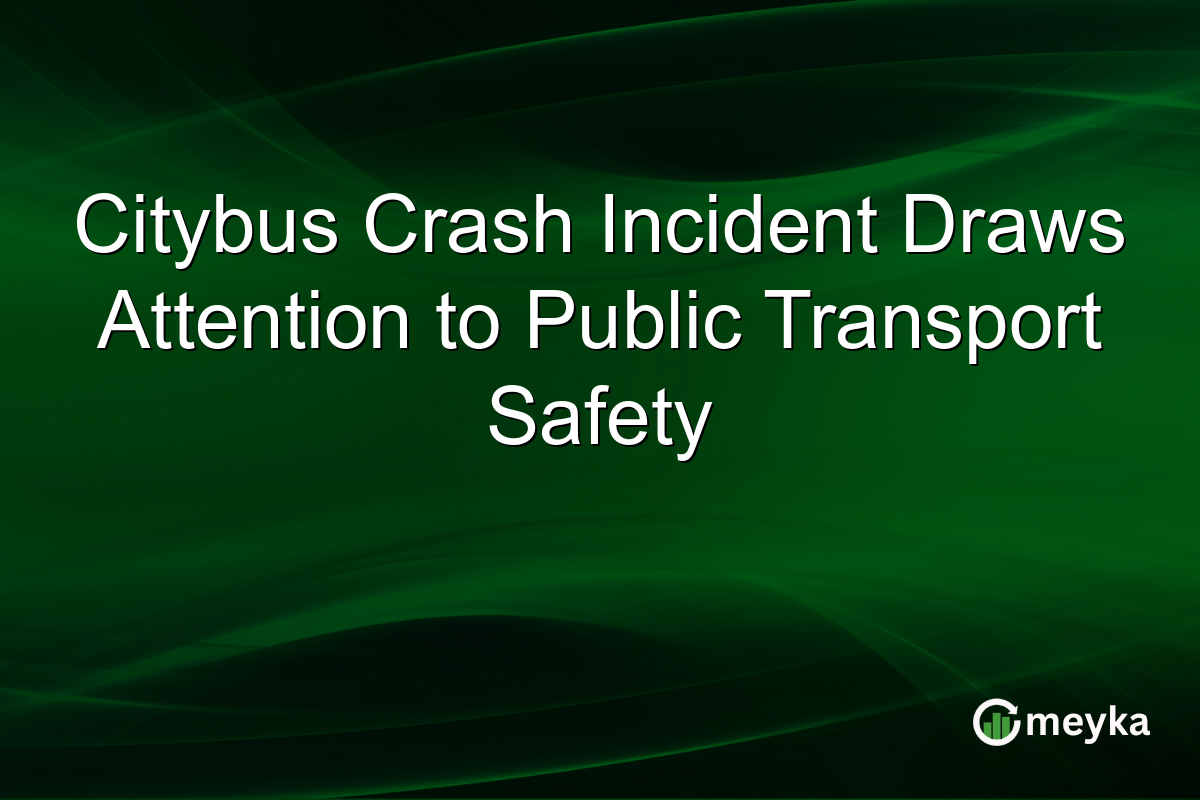Citybus Crash Incident Draws Attention to Public Transport Safety
The recent Citybus crash near Hong Kong airport, which injured 18 individuals, has sparked renewed focus on public transport safety. With Hong Kong’s bustling urban environment, reliance on public buses is significant, making safety considerations imperative. This incident serves as a stark reminder of potential vulnerabilities within Hong Kong’s transportation system. As authorities investigate the crash, discussions around bus safety measures have gained prominence, urging both quick action and long-term strategies to ensure commuter safety.
Understanding the Citybus Crash
On November 14, a double-decker Citybus collided with a lamppost near Hong Kong’s airport, injuring 18 passengers. This distressing incident has prompted widespread public concern and media coverage, leading to calls for improved safety regulations within the city. Currently, investigations are underway to determine the exact causes. Early reports suggest the possibility of driver error or mechanical failure, both raising significant alarms regarding the existing safety protocols in public transport.
Importance of Public Transport Safety Measures
Public transport safety is paramount in a city like Hong Kong, where millions rely daily on buses for their commutes. The Citybus crash highlights the pressing need for enhanced safety mechanisms, including stricter vehicle maintenance checks and comprehensive driver training programs. Previous studies have identified that most accidents stem from human error and inadequate maintenance, underscoring the critical areas needing reform. Integrating technology, such as automated braking systems, can minimize risks. This incident stresses the urgency of adopting such innovations to protect commuter safety.
Hong Kong Transportation and Existing Challenges
The Hong Kong transportation system is renowned for its efficiency, yet recent events have underscored its vulnerabilities. Overcrowding and high traffic conditions challenge even the most diligent drivers and well-maintained vehicles. Inadequate infrastructure and limited resources further complicate efforts to uphold rigorous safety standards. While the government has implemented measures to address these issues, continuous investment in infrastructure and technology is essential. The Citybus crash serves as a catalyst for ongoing dialogues about sustaining and enhancing public transport efficacy.
Path Forward: Future of Bus Safety Measures
In light of the Citybus crash, authorities are re-evaluating existing safety protocols. There is a pressing call for integrating advanced safety technologies, enhancing training for drivers, and ensuring stringent maintenance regulations. Collaborative efforts between governmental bodies and transportation companies are crucial. Moving forward, the focus should also be on public engagement, helping citizens understand safety measures and voice their concerns. Strong public-private partnerships and policy reforms could pave the way towards a safer future for Hong Kong’s public transportation network.
Final Thoughts
The Citybus crash near Hong Kong airport acts as a critical wake-up call, emphasizing the need for bolstered safety regulations in public transport. Ensuring the safety of millions of daily commuters requires immediate action and sustained efforts. As investigations progress, the focus should remain on implementing comprehensive measures, integrating technology, and fostering robust collaboration between stakeholders. A commitment to safety will not only improve commuter confidence but also enhance the overall efficiency and reliability of Hong Kong’s transportation system. This incident serves as a timely reminder that safety should always be the top priority in public transport management.
FAQs
The Citybus crash has highlighted critical safety gaps in Hong Kong’s public transport system, emphasizing the need for improved driver training, technology integration, and vehicle maintenance protocols to ensure commuter safety.
Technology such as automated braking systems and real-time monitoring can significantly reduce accident risks, providing enhanced safety for both drivers and passengers in public transport systems.
Following the crash, authorities are reviewing safety regulations, considering technology adoption, and enhancing driver training. Public and private sectors are urged to collaborate for effective policy implementations.
Disclaimer:
The content shared by Meyka AI PTY LTD is solely for research and informational purposes. Meyka is not a financial advisory service, and the information provided should not be considered investment or trading advice.






